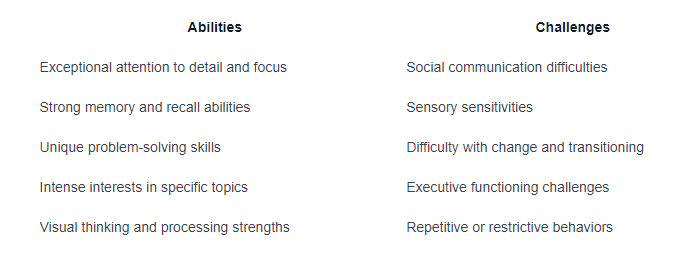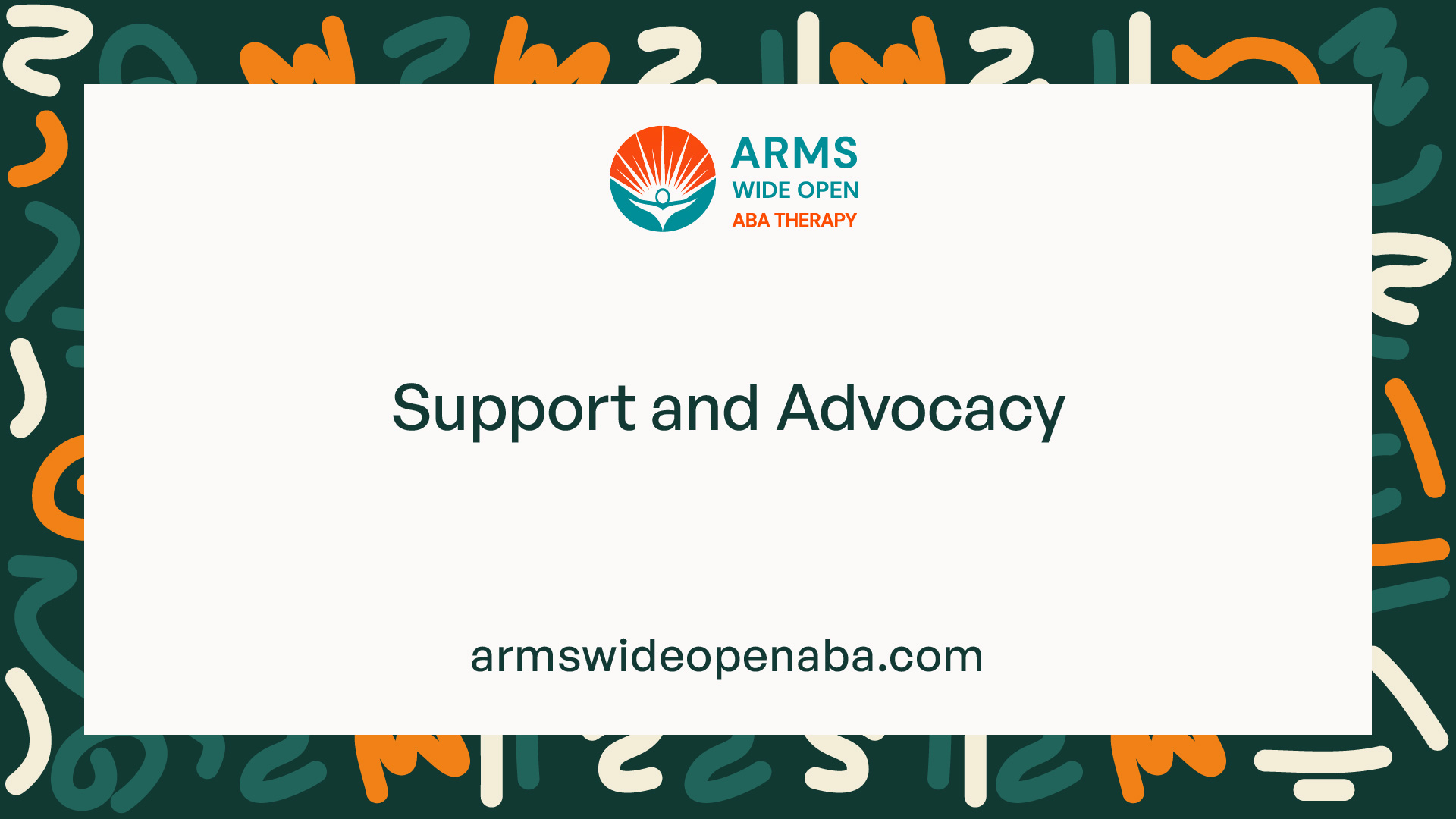Is Autism a Mental Illness?
Decoding autism: Unraveling the truth behind autism spectrum disorder - a unique spectrum, not a mental illness.


Understanding Autism Spectrum Disorder (ASD)
Autism Spectrum Disorder (ASD) is a complex neurodevelopmental condition that affects individuals in unique ways. It is important to gain a comprehensive understanding of ASD to better support and advocate for individuals with autism. This section will provide a definition and overview of ASD, as well as highlight common characteristics exhibited by individuals with ASD.
Definition and Overview of ASD
ASD is a lifelong condition characterized by difficulties in social interaction, communication, and restricted and repetitive patterns of behavior and interests. It is referred to as a "spectrum" disorder because the severity and manifestation of symptoms can vary greatly among individuals. Symptoms usually emerge in early childhood, often before the age of three, and can persist throughout adulthood.
While the exact cause of ASD is still under investigation, research suggests a combination of genetic and environmental factors contribute to its development. It is important to note that ASD is not caused by external factors such as parenting style or vaccines, as some misconceptions may suggest.
Common Characteristics of Individuals with ASD
Individuals with ASD exhibit a wide range of characteristics that can impact their daily lives. These may include:
- Challenges in social interaction: Difficulties in understanding and responding to social cues, maintaining eye contact, and engaging in reciprocal conversations.
- Communication difficulties: Delayed language development, atypical speech patterns (e.g., echolalia or repetitive speech), and challenges with nonverbal communication.
- Restricted and repetitive behaviors: Engaging in repetitive movements or behaviors, fixating on specific interests or topics, and experiencing difficulty with changes in routine.
- Sensory sensitivities: Heightened sensitivities to sensory input, such as loud noises, bright lights, or certain textures, which can lead to sensory overload or avoidance.
It is important to remember that individuals with ASD are a diverse group, and not all individuals will exhibit the same characteristics or to the same degree. The spectrum nature of ASD means that each person's experience is unique, requiring individualized support and understanding.
Understanding the definition and common characteristics of ASD lays the foundation for further exploration into the distinct nature of autism and the importance of creating inclusive environments that support the needs of individuals on the spectrum.
Is Autism a Mental Illness?
Autism is often a subject of confusion and misconception, leading to questions about its classification as a mental illness. In this section, we will clarify the distinction between autism and mental illness and explore the neurodevelopmental nature of autism.
Clarifying the Distinction Between Autism and Mental Illness
Autism Spectrum Disorder (ASD) is not classified as a mental illness. While it does affect an individual's behavior and cognitive functions, it is fundamentally different from mental illnesses such as depression or anxiety disorders. Mental illnesses primarily involve disturbances in mood, thought processes, and emotions, whereas autism is characterized by challenges in social communication, sensory processing, and repetitive behaviors.
It is important to note that individuals with autism may experience co-occurring mental health conditions, such as anxiety or attention-deficit/hyperactivity disorder (ADHD). These conditions are separate from autism itself and require appropriate diagnosis and treatment.
Exploring the Neurodevelopmental Nature of Autism
Autism is considered a neurodevelopmental disorder, which means it is rooted in atypical brain development that occurs during early childhood. Research suggests that genetic and environmental factors play a role in the development of autism.
Neurodevelopmental disorders, including autism, affect the way the brain processes and responds to information. Individuals with autism may have differences in their neural connections, leading to challenges in social interaction, communication, and sensory processing.
To shed light on the neurodevelopmental aspect of autism, let's take a look at some key characteristics often observed in individuals with autism:

Understanding that autism is a neurodevelopmental condition helps dispel the misconception of it being a mental illness. It highlights the unique challenges and strengths that individuals with autism possess, emphasizing the importance of creating an inclusive and supportive environment to foster their well-being and overall quality of life.

The Spectrum Concept
Autism Spectrum Disorder (ASD) is characterized by a wide range of abilities and challenges, leading to the concept of the autism spectrum. This section will explore the diversity within the autism spectrum and provide an understanding of the varying abilities and challenges individuals with autism may experience.
Embracing the Diversity Within the Autism Spectrum
The autism spectrum encompasses a broad range of characteristics and behaviors, highlighting the uniqueness of each individual with autism. It is crucial to embrace this diversity and recognize that no two individuals with autism are exactly alike. Some individuals may have exceptional talents and abilities in specific areas, while others may face significant challenges in different aspects of life.
To better understand the diversity within the autism spectrum, it is helpful to view it as a continuum. At one end of the spectrum, individuals may have milder symptoms and higher levels of functioning, often referred to as high-functioning autism or Asperger's syndrome. On the other end, individuals may have more significant impairments and require more support for daily living activities.
It's important to avoid making assumptions or generalizations about individuals with autism based on their diagnosis alone. Each person's experience with autism is unique, and their abilities, strengths, and challenges should be acknowledged and respected.
Understanding the Range of Abilities and Challenges
The autism spectrum encompasses a wide range of abilities and challenges that individuals with autism may experience. While it is impossible to capture the full extent of this diversity, understanding some of the common characteristics can provide insight into the experiences of individuals with autism.

It's important to remember that these abilities and challenges can vary significantly from person to person. Some individuals may excel in certain areas, such as mathematics or music, while facing difficulties in social interactions. Others may have heightened sensory sensitivities but exhibit exceptional artistic abilities.
By recognizing and appreciating the diverse range of abilities and challenges within the autism spectrum, we can foster a more inclusive and understanding society. It is through this understanding that we can create supportive environments that allow individuals with autism to thrive and reach their full potential.
Diagnosis and Treatment
When it comes to autism spectrum disorder (ASD), early diagnosis and appropriate treatment play a crucial role in supporting individuals and maximizing their potential. In this section, we will discuss the importance of early diagnosis and explore some of the therapeutic approaches and interventions commonly used in the treatment of autism.
Importance of Early Diagnosis
Early diagnosis of autism is vital as it allows for early intervention and support. The earlier autism is identified, the sooner individuals can receive the necessary interventions to address their unique challenges and enhance their development. Early diagnosis also enables families to access appropriate resources and support systems, helping them navigate the journey ahead.
To aid in the early diagnosis of autism, healthcare professionals utilize various assessment tools and observations. These assessments evaluate social communication skills, repetitive behaviors, and other behavioral patterns associated with autism. The American Academy of Pediatrics recommends autism-specific screening at 18 and 24 months, along with ongoing developmental surveillance during routine well-child visits.
Therapeutic Approaches and Interventions
While autism is a lifelong condition, there are various therapeutic approaches and interventions that can help individuals with autism thrive and reach their full potential. These interventions are tailored to each individual's unique needs, strengths, and challenges. Some common therapeutic approaches include:
- Applied Behavior Analysis (ABA): ABA focuses on analyzing and modifying behaviors to teach new skills and reduce challenging behaviors. It utilizes positive reinforcement techniques to encourage desired behaviors and discourage unwanted ones.
- Speech and Language Therapy: Speech and language therapy aims to improve communication skills, including speech, language comprehension, and nonverbal communication. This therapy helps individuals with autism develop effective communication strategies and enhance their social interactions.
- Occupational Therapy (OT): OT focuses on developing everyday life skills, such as fine motor skills, self-care routines, and sensory integration. Occupational therapists work with individuals to improve their ability to engage in activities of daily living and navigate sensory sensitivities.
- Social Skills Training: Social skills training helps individuals with autism develop social interaction skills, such as initiating conversations, maintaining eye contact, and interpreting nonverbal cues. These interventions provide structured learning opportunities to enhance social communication and promote social connections.
- Educational Support: Individualized education programs (IEPs) and special education services are crucial in meeting the unique educational needs of individuals with autism. These programs provide tailored support and accommodations to help individuals succeed academically and socially.
It's important to note that each individual with autism is unique, and interventions may vary based on their specific strengths and challenges. A comprehensive and individualized approach, guided by healthcare professionals and experts, can help individuals with autism make significant progress and lead fulfilling lives.
By recognizing the importance of early diagnosis and implementing appropriate therapeutic approaches, individuals with autism can receive the support they need to navigate the challenges associated with the condition and thrive in their personal and social lives.

Support and Advocacy
Support and advocacy play crucial roles in creating a nurturing and inclusive environment for individuals with autism. By building a supportive environment and advocating for inclusive communities, we can ensure that individuals with autism have the resources and opportunities they need to thrive.
Building a Supportive Environment for Individuals with Autism
Creating a supportive environment involves understanding and accommodating the unique needs of individuals with autism. By implementing the following strategies, we can promote their well-being and facilitate their integration into society:
- Education and Awareness: Increasing public understanding of autism through education and awareness campaigns helps to reduce stigma and misconceptions. This can be achieved through workshops, seminars, and community outreach programs.
- Accessible Communication: Providing clear and concise communication methods can greatly benefit individuals with autism. Using visual aids, social stories, and assistive technologies can enhance their ability to understand and express themselves effectively.
- Structured and Predictable Routines: Establishing structured and predictable routines can provide a sense of security for individuals with autism. Consistency in daily activities and schedules helps them navigate their environment with greater ease.
- Sensory-Friendly Spaces: Creating sensory-friendly spaces acknowledges the sensory sensitivities of individuals with autism. Designing environments that minimize sensory overload, such as reducing loud noises or bright lights, can greatly improve their comfort and well-being.
- Tailored Support Services: Offering a range of support services tailored to the specific needs of individuals with autism is essential. This can include occupational therapy, speech therapy, social skills training, and counseling, among others.
Advocating for Inclusive Communities
Advocacy plays a vital role in promoting the rights and inclusion of individuals with autism. By advocating for inclusive communities, we can work towards breaking down barriers and ensuring equal opportunities for all. Here are some key aspects of advocacy:
- Legislation and Policy: Advocacy efforts should focus on influencing legislation and policies that protect the rights of individuals with autism. This includes advocating for inclusive education, employment opportunities, and access to healthcare services.
- Community Engagement: Encouraging active participation and engagement of individuals with autism in community activities fosters a sense of belonging and acceptance. This can be achieved through organizing inclusive social events, recreational activities, and support groups.
- Collaboration and Partnerships: Building partnerships with organizations, schools, businesses, and government agencies is crucial for creating sustainable change. Collaborative efforts can lead to the development of inclusive programs, employment initiatives, and community support services.
- Promoting Advocacy Skills: Empowering individuals with autism to become self-advocates is an important component of advocacy. By providing them with the necessary skills and knowledge, they can advocate for their own rights and contribute to the broader autism community.
By building a supportive environment and advocating for inclusive communities, we can create a society in which individuals with autism are valued, included, and empowered to reach their full potential. Together, we can foster a more inclusive and accepting world for everyone.
Debunking Myths and Misconceptions
In order to truly understand autism spectrum disorder (ASD), it is important to address and debunk the myths and misconceptions surrounding this condition. By dispelling stigmas and promoting acceptance and understanding, we can create a more inclusive and supportive environment for individuals with autism.
Addressing Stigmas Associated with Autism
Unfortunately, there are many stigmas and stereotypes surrounding autism that can lead to misunderstandings and discrimination. It is crucial to address these stigmas and provide accurate information to foster a more inclusive society.
One common misconception is that individuals with autism are intellectually disabled or lack intelligence. This is not true. Autism is a neurodevelopmental condition that affects social interaction, communication, and behavior, but it does not determine a person's intelligence. In fact, individuals with autism often possess unique strengths and abilities in various areas, such as mathematics, music, and visual thinking.
Another myth is that autism is caused by bad parenting or environmental factors. This is false. The exact causes of autism are still being studied, but it is widely accepted that a combination of genetic and environmental factors contribute to its development. It is important to understand that autism is not a result of any individual's actions or choices.
Promoting Acceptance and Understanding of Autism
Promoting acceptance and understanding of autism is essential for creating a more inclusive society. By educating ourselves and others about autism, we can break down barriers and foster a sense of empathy and support.
One way to promote acceptance is by embracing the concept of neurodiversity. Neurodiversity recognizes that autism and other neurological differences are natural variations of the human brain. It emphasizes the value of different ways of thinking and rejects the idea that there is a "normal" or "correct" way to be.
Education and awareness campaigns are also crucial in dispelling myths and misconceptions about autism. By providing accurate information about autism, its characteristics, and the challenges individuals with autism may face, we can help create a more informed and accepting society.
Furthermore, it is important to promote inclusive practices and accessibility in various settings, such as schools, workplaces, and public spaces. This includes providing accommodations and support for individuals with autism to fully participate and thrive in these environments.
By addressing stigmas associated with autism and promoting acceptance and understanding, we can create a more inclusive society that values and supports individuals with autism. It is through education, awareness, and empathy that we can build a world where individuals with autism are embraced for their unique abilities and contributions.
Sources
https://www.youngminds.org.uk/young-person/mental-health-conditions/autism-and-mental-health/
https://www.verywellhealth.com/is-autism-a-mental-illness-4427991
https://www.nimh.nih.gov/health/topics/autism-spectrum-disorders-asd
Similar articles
We’re here to help you

Our team is here to assist you in this process. Contact us for any assistance.
it’s easy to apply
We Accept Most Insurances
Our in-network insurance partnerships make ABA therapy more accessible to families throughout our service areas.







Our Insurance Process
We'll request your insurance details to help us verify your plan's coverage for ABA therapy. Once we've received this information, we'll walk you through your benefits, including copayments, deductibles and out-of-pocket maximums, so you know what to expect in advance.
Our team will then handle the preauthorization and all the necessary paperwork.
.svg)





















.jpeg)


































.jpeg)




.jpeg)







.jpeg)











.jpeg)
















